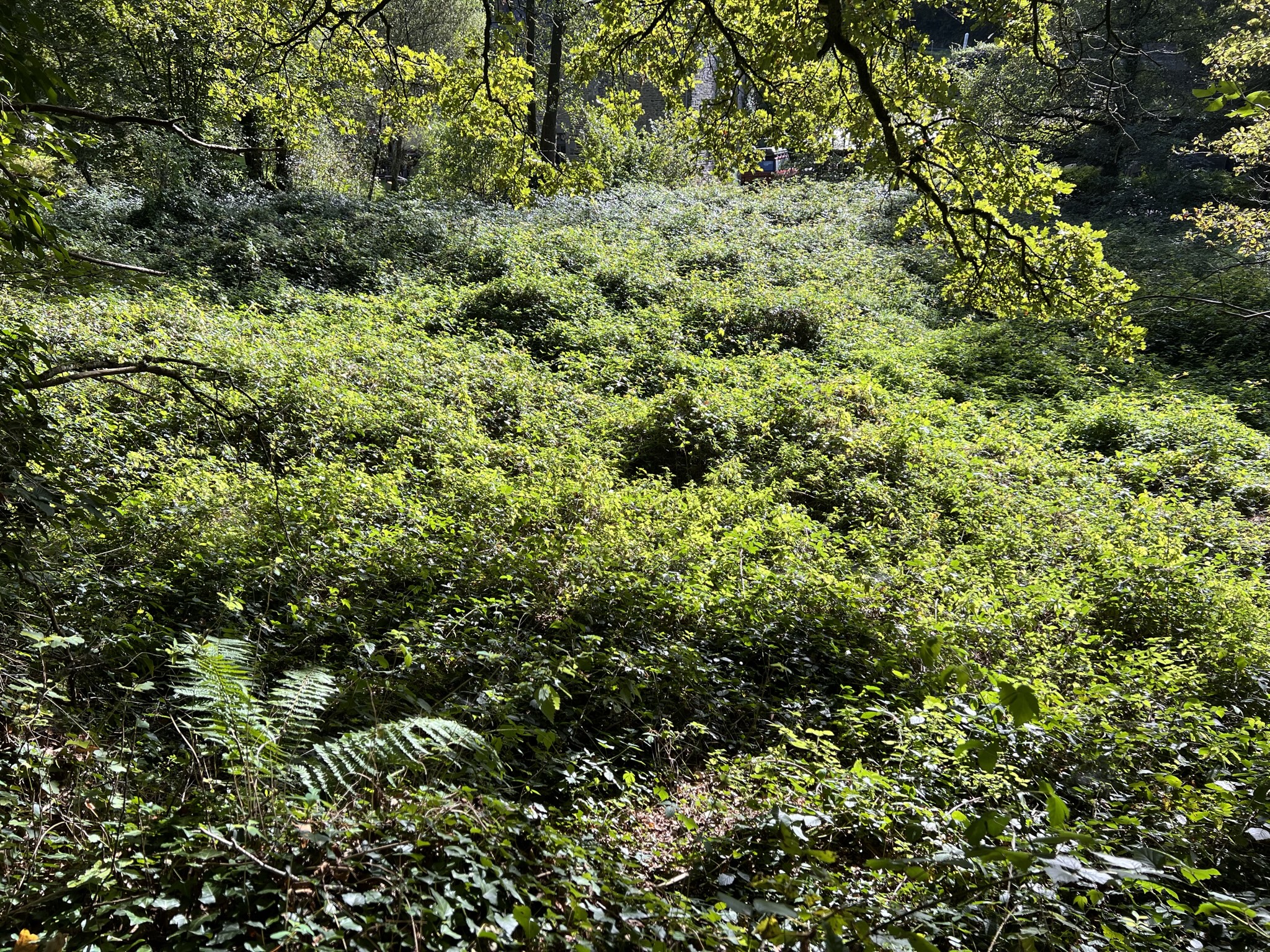When we moved to our new place in France there was an area of ground beyond the river that was very overgrown. As far as we know it hasn’t been cleared or worked for at least 20 years – the length of time the previous owners were here – and for all we know maybe a very long time more. We think it’s probably around half an acre and we always knew we would make it into something more than a piece of scrubland.
 We’ve pondered the meadow and visualised what it could be – a wild flower meadow, vegetable gardens, maybe a couple polytunnels for growing, a place for animals, perhaps goats or sheep, perhaps somewhere to put bees. It’s difficult though to visualise when we have no idea what the ground is like under the veil of 6 ft brambles. We could see a fallen tree in there, still alive but being consumed by the brambles. We could see it was wet. Beyond that we had no idea what was under there.
We’ve pondered the meadow and visualised what it could be – a wild flower meadow, vegetable gardens, maybe a couple polytunnels for growing, a place for animals, perhaps goats or sheep, perhaps somewhere to put bees. It’s difficult though to visualise when we have no idea what the ground is like under the veil of 6 ft brambles. We could see a fallen tree in there, still alive but being consumed by the brambles. We could see it was wet. Beyond that we had no idea what was under there.
It’s not a summer job to clear such a place. It was likely to house wasp nests or even hornet nests and so not safe to attempt while the season of the buzzy things was still in force. So we’ve waited until the first winter. We watched for the disappearance of the Asian hornets (the European ones seem to disappear much earlier than their clearly more hardy, more aggressive Asian cousins). An out of season burst of flowers from a Camelia bush gave us some insight as we watched Asian hornets desperately seeking sustenance from the flowers only to simply die in them as they weakened.
Once we had seen the last of the buzzies Dennis got to work starting the mammoth task of clearing brambles. This is how it looked in October last year – inaccessible.

It’s probably worth mentioning here the dilemma or clearing such a place. It likely houses many creatures and we had to talk this through together and once decided, from a Druidic perspective I also wanted to discuss it with the land. There are lots of areas similar to this along the valley floor and so it seemed to not be a catastrophic choice to clear this small patch. Nevertheless Dennis was very careful as he made his way through the brush with his cutter giving time and consideration to the creatures potentially hiding within.

He started at the closer end nearest the house and garden. The brambles and nettles had started to die back by this time as we were nearing the end of November. Autumn was giving way to Winter, despite the mild weather, and greens were becoming browns. Some of the brambles were several metres long and were climbing the trees, even the elevated willow branches were being grasps and pulled down.
Once a little had been cleared I was able to venture in a little and see a bit more of the fallen tree and also the wet land under foot that had a blanket of marshy type plants growing still.
Clearing continued through into December and I dug a few channels to help release the water in the ground. As I dug into the ground it was very soft but the water table was not at surface level – there was drier earth underneath – this was encouraging. Also, it was dark, peaty earth – looks very fertile. It is pretty wet though and we’ll need to see how it dries going into the drier seasons to see what scope we have to use it for animals.
We also used caution digging into the ground as we have no idea whether this ground has been cleared even as far back as WW2 and as we’re in Normandy and there would have been plenty of fighting in this area, we didn’t want to discover any unfriendly items like grenades or even remains.
It was a mammoth task indeed but he got there – on his own with the cutting. And now we wait and see how it dries and what is growing there. The fallen willow needs attention – we’ve decided to clear the branches that are more horizontal and try to save the uprights – we hope she will survive and thrive now she is released from her bramble prison. There does seem to be life in her so we’ll see how she fares come spring. A few young Elder trees were also discovered and uncovered. There are a couple of wide Iris beds (which we will need to move if we put goats in the meadow as they are poisonous).
It’s a terrific space and we’re excited to see how it develops. We’re now thinking goats and bees will live in this space – with an area of wild flowers for the bees.















